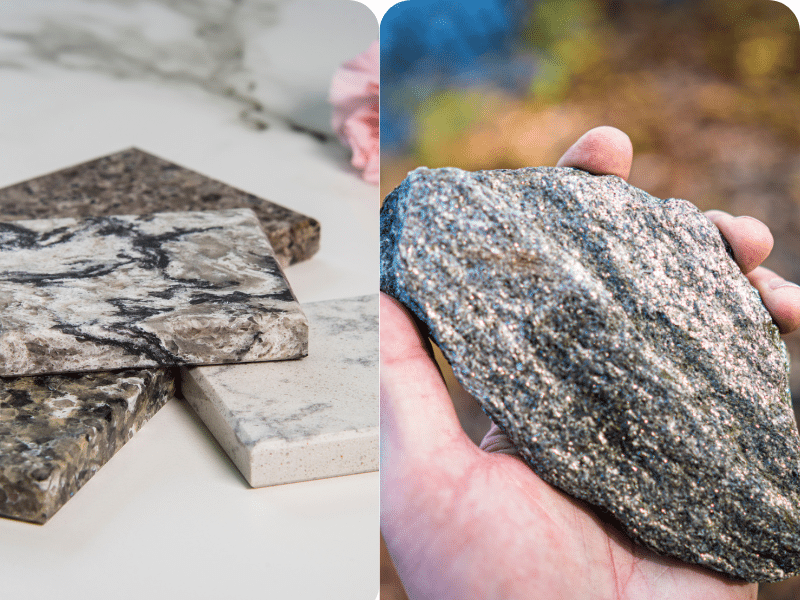Choosing the right natural stone for your home renovation project is a big decision, and you will want to consider all the available options before making a choice. The most popular options are marble, granite, and quartz. However, there are lesser-known options that you cannot afford to ignore. One such option is Schist. Let us try to find out the difference between Granite and Schist and see what makes it a great choice for your home:
What is granite?
Granite is the most widespread of all igneous rocks. It is an intrusive igneous rock. Intrusive rocks are formed from magma or molten material that flows and solidifies underground. Over time, the overlying rocks get removed and the underlying granite is exposed. Granite is composed of quartz, feldspar, and mica. It has a coarse texture and you can see individual minerals without magnification. Granite is extensively used for monuments, construction materials, and other architectural elements.
What is schist?
Schist is a low to medium-grade metamorphic rock composed of plate-shaped mineral grains that are visible with the unaided eye. The word Schist comes from the Greek word schizo, meaning ‘to tear’, which refers to its strong fissility. Schist forms on the continental side of a convergent plate boundary where sedimentary rocks such as mudstones and shales have been subjected to compressive forces, chemical activity, and heat. A schist does have a specific mineral composition. A rock that contains platy metamorphic minerals such as graphite, hornblende, or talc in alignment is referred to as schist. The rock can be broken into thinner slabs along the direction of the alignment of the platy mineral grains.
Schist Vs. Granite
The first obvious difference between schist and granite is that the former is metamorphic and the latter is igneous. They have different physical properties, although they have similar design applications.
Hardness
The most important consideration when it comes to choosing a natural stone for your home is its hardness and durability. Granite is very hard and durable. This is the reason why it is extensively used in places where strength and durability are essential, such as monuments and building facades. It is also heat and scratch-resistant. Schist is also a hard stone, and its durability depends on the amount of mica it contains. It is important to speak to your natural stone supplier about the hardness of the schist they are offering. Regardless of the type of schist, it always makes a great choice for wall accents, backsplashes, and countertops.
Appearance
Granite and schist are available in a wide variety of colors and patterns. However, what sets them apart is the characteristic sheen of schist. While schist has a beautiful shimmer, granite is warmer and less shiny. If there is a design application that calls for a shiny surface, schist will make the best choice.
Maintenance
Both granite and schist are porous; hence they both need regular maintenance. Both the stones have to be sealed to prevent staining. It is important to wipe off the spills immediately. It is recommended that you do not use harsh cleansing agents on both stones and do not keep hot objects directly on them. So, as far as maintenance is concerned, there is no difference between schist and granite.
When deciding between Granite vs. Schist for your home, it’s crucial to weigh the pros and cons of granite vs. schist. Granite offers durability and a timeless look, while schist brings unique beauty. Ultimately the choice between granite vs. schist should align with your aesthetic preferences and practical needs.
Looking for top-quality granite schist in Connecticut? Get in touch with our team right away. We will answer all your questions and help you decide the type and amount of stone you will need for your project.

